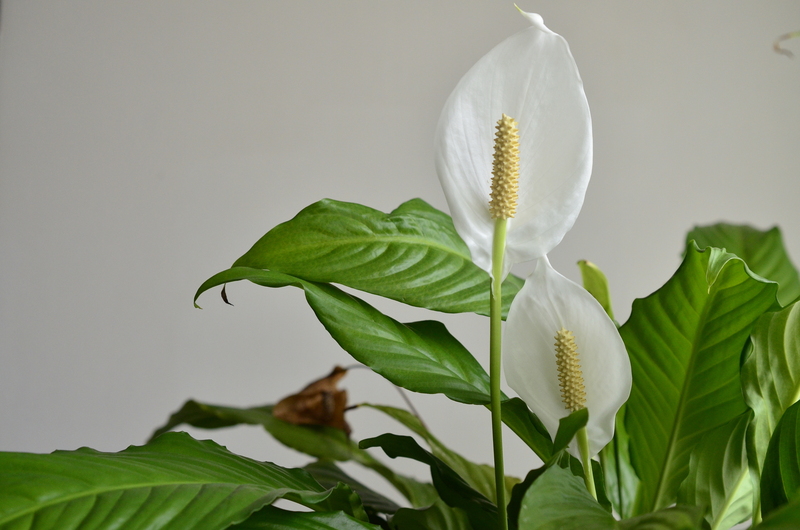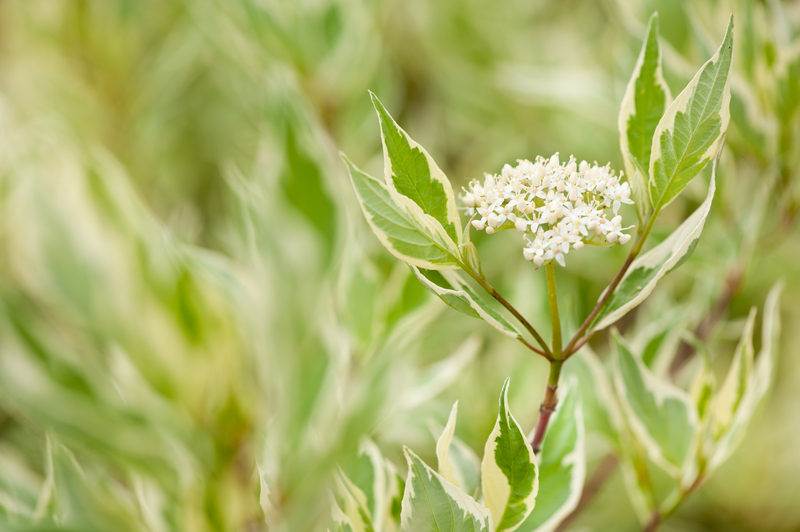Secrets to Keeping Garden Plants Safe in Winter
Posted on 24/05/2025
Secrets to Keeping Garden Plants Safe in Winter
When the temperature drops and frost threatens, many gardeners worry about how to keep their cherished plants alive and thriving. Learning the secrets to keeping garden plants safe in winter can help you maintain a vibrant and resilient garden, no matter how cold the season gets. In this comprehensive guide, we'll delve into expert tips, essential techniques, and the best strategies to protect your garden from the harsh winter months.
Understanding the Threats of Winter to Garden Plants
The journey to winter-proofing your garden plants starts with a clear understanding of the unique challenges posed by cold weather. From frost and freezing winds to fluctuating temperatures, winter presents several threats:
- Frozen Soil: Roots can be damaged when the ground freezes, limiting water and nutrient uptake.
- Frost Damage: Leaves, buds, and stems can be injured by frost, leading to dieback or even plant death.
- Dehydration: Despite snow and ice, plants can dry out due to lack of accessible water.
- Wind Burn: Cold winds strip moisture from leaves and stems, causing desiccation.
- Pest and Disease Outbreaks: Mild winters can encourage pests and pathogens to survive.
Protecting garden plants in winter is more than a single action--it's a holistic approach that considers the type of plants, the local climate, soil conditions, and more. Let's explore the best-kept secrets for keeping your garden beautiful over winter months.

Choosing the Right Plants for Winter Hardiness
A vital step in keeping your garden safe during winter is selecting plants suitable for your local climate. Here's how:
- Know Your Plant Hardiness Zone: Use the USDA Plant Hardiness Zone Map or your region's equivalent to determine which plants can survive in your area.
- Select Hardy Varieties: Choose species and cultivars proven to withstand local winter conditions.
- Mix Perennials & Annuals: Perennials often have established root systems better able to handle winter, while annuals can be replanted each spring.
Tip: Always read plant tags or seed packets for specific cold tolerance information.
Preparing Your Garden Before Winter Strikes
Effective winter plant protection begins long before the first snowfall. Thorough autumn preparation is a key secret to survival:
1. Clean Up Debris
- Remove fallen leaves, spent stems, and old mulch to reduce hiding places for pests and diseases.
2. Pruning & Trimming
- Cut back perennials after they die down, but leave some stems for winter interest and wildlife habitat.
- Avoid heavy pruning of shrubs and trees late in the season, as it can encourage new (and vulnerable) growth.
3. Mulching for Insulation
- Apply a 2-4 inch layer of mulch (like straw, bark chips, or shredded leaves) around the base of plants. This insulates roots, moderates soil temperature, and preserves moisture.
- Be careful not to pile mulch against stems or trunks, as this can cause rot.
The Best Covers and Cloches for Winter Plant Care
When extreme cold is forecast, temporary physical protection shields plants from frost and wind:
- Frost Cloth or Garden Fabric: Lightweight fabric covers create a barrier, keeping warmth close to the plant.
- Plastic Domes and Cloches: These act like mini-greenhouses, trapping heat and blocking ice and snow.
- Burlap Wraps: Wrapping vulnerable shrubs with burlap protects them from burning winds.
- Upturned Pots: Covering delicate plants with pots for short cold snaps can prevent frostbite.
*Remember*: Remove covers during the day to allow air circulation and prevent overheating.
Watering Garden Plants in Winter
It's a common myth that plants don't need water when it's cold, but dehydration is a major winter risk. Here's how to get winter watering right:
- Water deep in late autumn: Before a hard freeze, deeply water your plants so soil retains moisture.
- Monitor winter rainfall and snow: If the weather is unusually dry, water your garden during sunny winter days when temperatures are above freezing.
Don't forget to drain and store hoses after watering to prevent ice damage!
Moving Sensitive Plants Indoors or Into Shelters
For particularly delicate plants, the ultimate secret to protecting garden plants in winter may be relocation:
- Bring potted tropicals, annuals, and tender perennials indoors before frost is expected.
- Place them in a sunny window or unheated greenhouse where temperatures won't drop below freezing.
- Reduce watering but don't let the soil dry out completely.
Special Winter Care for Container Plants
Plants in pots are more exposed to cold because their roots aren't insulated as well as those in the ground. Here are some strategies for container plant winter protection:
- Move pots together: Cluster pots in a sheltered area, close to the house, or in a garage.
- Wrap containers: Use bubble wrap, burlap, or old blankets to insulate pots.
- Raise pots off concrete: Use pot feet or bricks to prevent pots from staying wet and freezing.
Winterizing Trees and Shrubs
Trees and shrubs can be long-term garden investments, and their winter protection is crucial. To ensure their safety:
- Protect trunks from sunscald (bark cracking) by wrapping with tree guards or white tree wrap.
- Mulch widely out to the drip line to shield roots from temperature swings.
- For evergreens, consider anti-desiccant sprays to reduce moisture loss from leaves.
- Gently brush snow off branches to prevent breakage, but never try to remove ice.
Managing Snow and Ice in Your Garden
While snow acts as a natural insulator, heavy accumulation and ice storms present hazards:
- Gently remove snow: Shake or brush snow off branches to prevent breakage.
- Don't try to melt ice: Chipping or breaking ice can damage bark and branches; let it melt naturally.
- Avoid salt-based deicers near plants: These can harm roots and soil structure; opt for sand or sawdust instead.
Encouraging Beneficial Winter Wildlife
While protecting your garden plants from cold, don't forget to support birds and beneficial insects, as they can reduce pests and encourage plant health:
- Leave seed heads on some perennials as food for birds.
- Provide clean water sources where possible.
- Install birdhouses and insect shelters to help wildlife overwinter in your garden.
Recognizing and Treating Winter Damage
Despite your best efforts, plants can occasionally suffer during harsh winters. Here's how to help them recover:
- Don't rush to prune frost-damaged growth in early spring--it may protect underlying live tissue.
- Wait until new growth appears to remove dead stems and branches.
- Fertilize weak plants lightly as the weather warms.
Advanced Strategies: Winter Plant Protection for All Garden Types
For Vegetable Gardens
- Use cold frames, row covers, or plastic tunnels to extend the harvest season for leafy greens and root crops.
- Mulch heavily to prevent soil erosion and weed germination.
For Flower Gardens
- Lift and store tender bulbs (like dahlias or gladiolus) in a cool, dry place until spring.
- Plant spring-flowering bulbs (like tulips) before ground freezes, then mulch well.
For Rock & Alpine Gardens
- Shield delicate alpines from wetness with glass panes or specially designed covers.
- Avoid insulating plants that require dry "dormant" periods.
Secrets from Experts: Pro Tips for a Thriving Winter Garden
- Use old straw bales as windbreaks on the garden's windy side.
- Maintain soil health by planting cover crops which fix nitrogen and prevent erosion.
- Experiment with winter-blooming plants like hellebores or witch hazel for off-season color.
- Regularly monitor weather forecasts and be ready to act fast with covers or water when cold snaps hit.

Frequently Asked Questions About Winter Garden Care
Should I fertilize my garden plants in winter?
Generally, avoid fertilizing your plants in winter as it can stimulate new growth that may not survive cold spells. Wait until early spring when plants begin actively growing.
How do I know if a plant is dead after winter?
Don't give up at the first sign of damage. Scrape the bark gently with your fingernail--if it's green underneath, it's still alive. Many plants take time to recover and sprout in spring.
Can I use plastic to cover my plants?
Plastic offers some insulation, but it can trap condensation and heat, damaging plants if not ventilated. Use frost cloth or fabric for best results.
Is snow good for my plants?
Yes! A layer of snow insulates soil and roots. Only remove heavy snow from shrubs and evergreens to prevent branches from snapping under the weight.
Conclusion: Embrace Winter with Confidence
The secrets to keeping garden plants safe in winter aren't about quick fixes--they combine knowledge, preparation, and the right tools. Every garden is unique, but by following these expert tips, you'll give your landscape the best possible chance of emerging from winter healthy and ready for spring. Remember to:
- Select hardy, climate-appropriate plants
- Prepare and mulch thoroughly in fall
- Use covers, cloches, or bring tender plants indoors
- Monitor weather, provide water, and observe plant health throughout the cold months
With a little planning and these winter garden protection secrets, your beloved plants can survive and thrive, ensuring your garden remains a space of beauty and growth year-round. Happy winter gardening!

